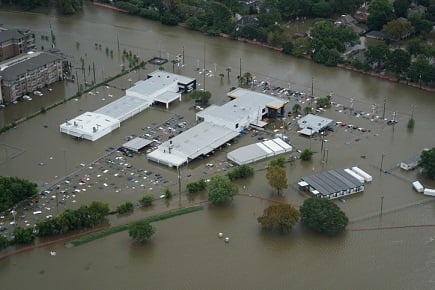

Last year saw a slew of record-setting claims from natural catastrophes like Hurricanes Harvey, Irma, and Maria that tore through the Caribbean, leaving businesses swamped with damages. With events like these slated to become the new normal, risk managers are asking themselves: Is traditional insurance the only option?
Parametric solutions offer a promising addition, said Robert Nusslein, head innovative risk solutions Americas, Swiss Re Corporate Solutions at the Henry B. González Convention Center in San Antonio to a packed room of risk managers at the very first thought leader session of RIMS 2018.
Parametric covers offer an innovative way to complement traditional coverage by covering gaps created by exclusions, he said, or protecting for events that were previously uninsurable.
The products payout based on indices – like windspeed or earthquake shake intensity – instead of actual losses. The sums are arranged and determined beforehand and paid out when a trigger (usually weather-related) passes the threshold.
“What we do first is work to develop pre-defined event triggers,” said Nusslein. “Then we put all of this into a simple insurance policy. If an event occurs that meets or exceeds the threshold, the payout is made within 30 days.”
Take parametric hurricane insurance, for example.
Swiss Re works with RMS, a catastrophe modeling company, to generate a wind footprint for hurricane events. they’re completely independent, with no influence by the insured or insurer,” said Nusslein. If the pre-determined metric is met or passed, the insurer will make the payout – and fast.
The best part of parametric triggers? They’re clear and neutral. Payouts are pre-agreed and there’s no need for a claims investigation, so there’s no time wasted in getting cash back into your business’ pocket ASAP.
“One of the main advantages of parametric nat cat cover is that payment is rapid,” he said. “There’s no loss adjuster running around making calculations. It’s a simple calculation. If the metric exceeded the threshold, then the payment is made.”
In traditional insurance policies, adjusting loss claims for replacement, repairs, and business interruption can be costly and time-consuming. With parametric solutions, the cumbersome process of loss adjustment is avoided entirely, and liquidity is provided to the policyholder almost immediately.
Last year’s disastrous hurricane season put parametric covers to the test. The result? Resounding success. “We had good experience last year with Harvey, Irma, and Maria from the perspective that it challenged the payout threshold of 30 days or less and it was met,” said Nusslein. “The product worked.”
